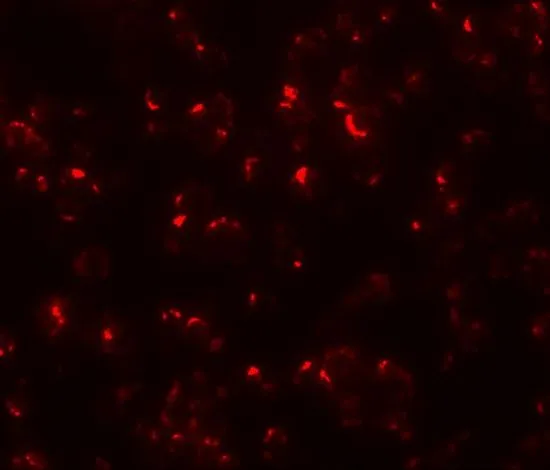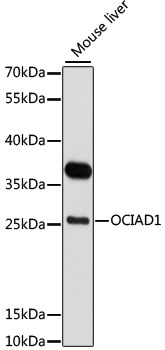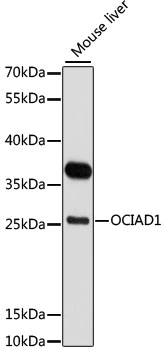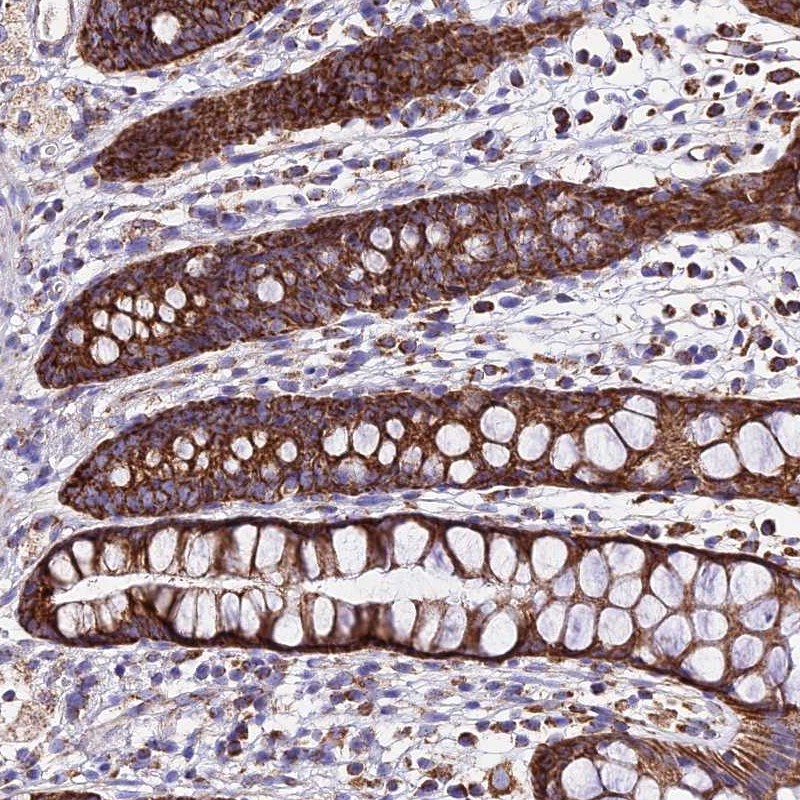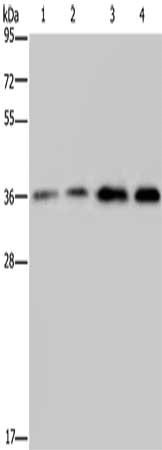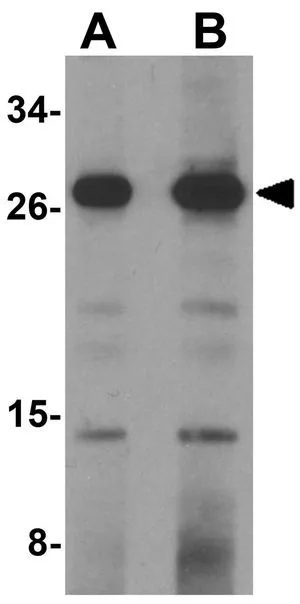
WB analysis of 293 cell lysate using GTX85234 OCIAD1 antibody. Working concentration : (A) 1 and (B) 2 microg/ml
OCIAD1 antibody
GTX85234
ApplicationsImmunoFluorescence, Western Blot, ELISA, ImmunoCytoChemistry
Product group Antibodies
TargetOCIAD1
Overview
- SupplierGeneTex
- Product NameOCIAD1 antibody
- Delivery Days Customer9
- Application Supplier NoteWB: 1 - 2 microg/mL. ICC/IF: 20 microg/mL. *Optimal dilutions/concentrations should be determined by the researcher.Not tested in other applications.
- ApplicationsImmunoFluorescence, Western Blot, ELISA, ImmunoCytoChemistry
- CertificationResearch Use Only
- ClonalityPolyclonal
- Concentration1 mg/ml
- ConjugateUnconjugated
- Gene ID54940
- Target nameOCIAD1
- Target descriptionOCIA domain containing 1
- Target synonymsASRIJ, OCIA, TPA018, OCIA domain-containing protein 1, ovarian cancer immunoreactive antigen domain containing 1, ovarian cancer immunoreactive antigen domain containing 1A, ovarian carcinoma immunoreactive antigen
- HostRabbit
- IsotypeIgG
- Protein IDQ9NX40
- Protein NameOCIA domain-containing protein 1
- Scientific DescriptionOCIAD1 was identified via immunoscreening of an ovarian carcinoma cDNA library from ovarian cancer patients and is expressed in multiple tissues including ovary, placenta, brain, testis, prostate, and mammary gland. Two isoforms of OCIAD1 are known to exist; the shorter isoform is restricted to the central nervous system. OCIAD1 is a transmembrane protein whose overexpression in HEY ovarian cancer cells increased lysophosphatidic acid- (LPA-)induced, but not basal level cell adhesion to extracellular matrix proteins collagen I and laminin10/11. This adhesion is not blocked by LY294002 and GF109203X, suggesting that OCIAD1 does not use protein kinase C and PI3 kinase signaling pathways to exert its effect on adhesion.
- Storage Instruction-20°C or -80°C,2°C to 8°C
- UNSPSC12352203

